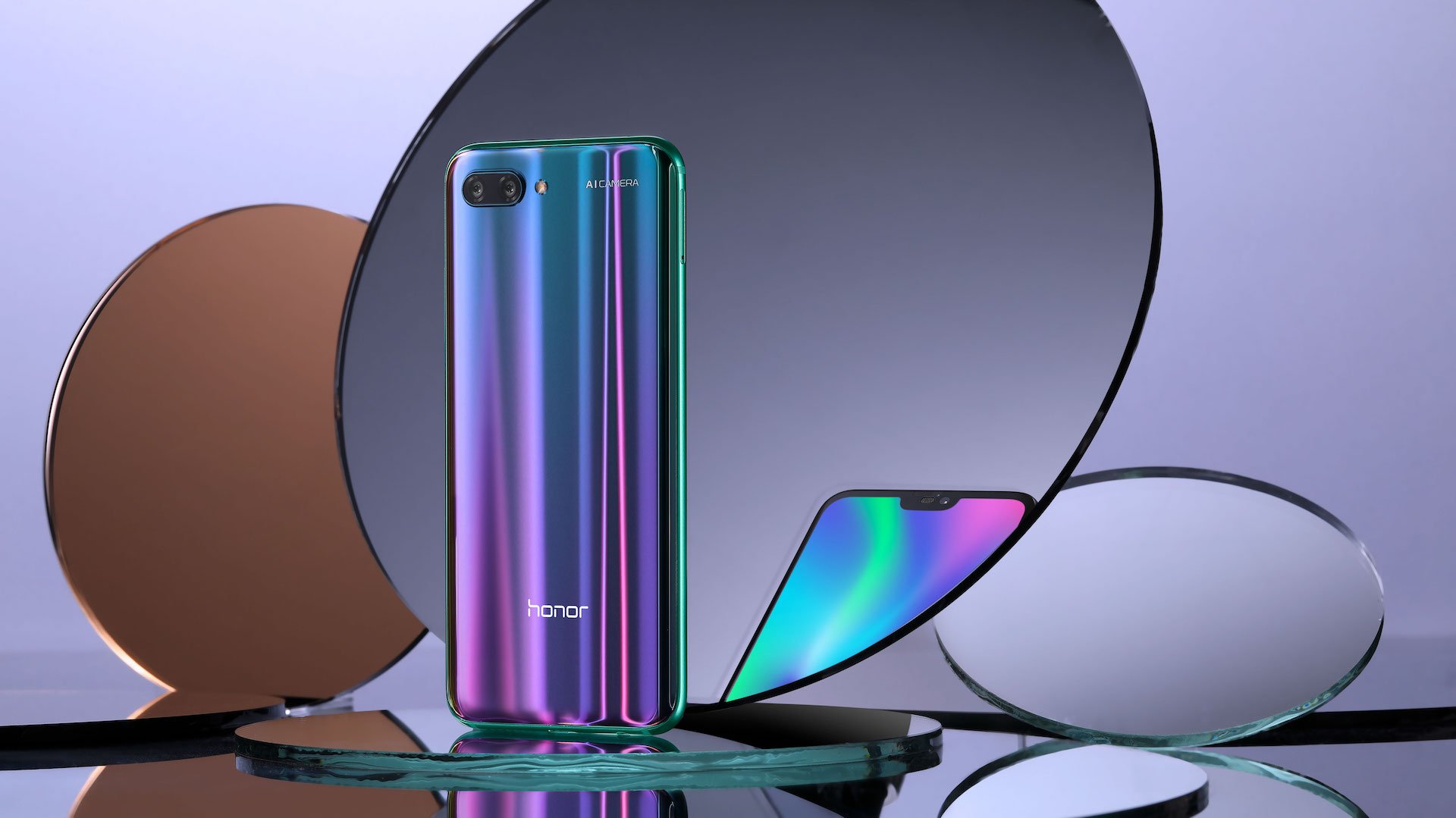Earlier this week I attended the Honor 10 launch event in London.
My summary of that event: Honor’s new flagship gives customers a beautifully designed smartphone, powerful specifications and photography capabilities that rivals high-end flagships that cost over double the Honor 10’s £400 price (128GB version). That’s impressive.
Here are the highlights!
Honor 10’s chic colours

Honor’s president spent a lot of time (and I mean a lot) talking about the Honor 10’s design — specifically the two new colours called Phantom Blue and Phantom Green. There is also Phantom Grey and Midnight Black, although they understandably don’t get as much attention as their more colourful counterparts.
George Zhao, Honor’s President, spoke extensively about the process involved in creating the Honor 10’s glass body and the inspiration behind the colours. All you need to know is that this device looks dazzling; turn your phone around in different lighting conditions and the Phantom Blue version, for example, reflects various tints of blue & violet. Equally, the Phantom Green displays tints of “sea blue” and “jewellery green”. It’s incredibly chic, eye-catching and I love it.
Honor 10 full view display – and a notch

Honor managed to squeeze a lot of screen into a relatively small body — an 86% screen-to-body ratio to be precise — making one-handed use very easy. You’re getting a 5.84-inch HD+ display (2280 x 1080p resolution) with a 19:9 aspect ratio and it looks very bright and colourful.
The smartphone trend of 2018 has got to be the notch. Apple kicked off the trend with the iPhone X and it seems while everyone was mocking the tech giants, Android manufacturers have been quick to follow with notches too.
George Zhao, Honor’s President, couldn’t resist having a little dig at Apple during his unveiling — mentioning how much smaller and better looking the Honor 10 notch is in comparison to the iPhone X. And, to be fair, the notch is rather small on the Honor 10; the more I use this device, the less I care that it exists. (Besides, there’s a software feature that can hide it if you really dislike seeing the notch.)
Ultrasonic fingerprint sensor with a flush design
I really like that Honor has included an “ultrasonic fingerprint sensor” for unlocking your phone, as well as facial recognition. This satisfies yet another of my complaints of the iPhone X as they omitted TouchID in favour of FaceID, but conveniently with the Honor 10, you get both.
Found under the glass — not on a button — this fingerprint sensor blends in seamlessly to the Honor 10’s glass body for a beautiful flush design. Honor claims it will work even when your hands are wet or greasy, although I’ll share my definitive thoughts about that in the full review.
Honor 10 and AI for photography
Alongside the design, Honor has placed a lot of emphasis on the camera and AI capabilities of the Honor 10. When you look at the spec sheet, you can quickly understand why!
On the back, you’re getting a 24MP monochrome and 16MP RBG camera setup, while the front features a 24MP shooter for selfie-lovers.
(Follow @FabMeetsWorld on Instagram if you want to see photos of my travels taken with this phone. Abu Dhabi coming soon!)
Honor’s AI technology can play a big role in your photography if you use it. It can recognise over 500 different scenarios and adjusts your camera settings to optimise the shot based on whether it’s food, architecture, animals or landscapes. The AI will essentially segment the various elements of the image — i.e. the main subject (people, animals, etc.), trees in the background, the sky and any other layers — and optimise each component for the ideal shot.
I’ve noticed that in some situations Honor’s AI does a great job of optimising my shots. However, there are also several occasions when it oversaturates colours.
The Honor 10 cameras all support portrait photography, meaning you can easily blur the background for a focused, sharp image of the main subject. You can adjust the level of bokeh (or blur) before or after the photo is taken, and there are even various lighting modes and effects for your portrait photography.
One of the features I’m most interested in is the ability to take a group photo (groufie?) while applying a bokeh effect to the background. Many smartphone cameras struggle when it’s more than 1-2 people in the shot, so if this feature works well it could be very useful for creating awesome group photos.
First impressions of the Honor 10 smartphone
After a few days of use, I can say that the Honor 10’s cameras are impressive with sharp, colourful photos and good dynamic range — although they do tend to overexpose shots, especially the front camera. Frustratingly, you can’t adjust exposure levels while using the front camera, so selfies tend to look very bright and need editing afterwards. Hopefully, this can be fixed with a software update.
For now, here are my initial thoughts about the Honor 10… The Honor 8 Pro has been my go-to photography smartphone for the last couple of years. Now with an even more beautiful design, powerful specs and a promising camera setup, I’m very excited to see what the Honor 10 is like in daily use. Three days in, I’m already loving it and can’t wait to test it further so stay tuned for my full review in the following weeks.

